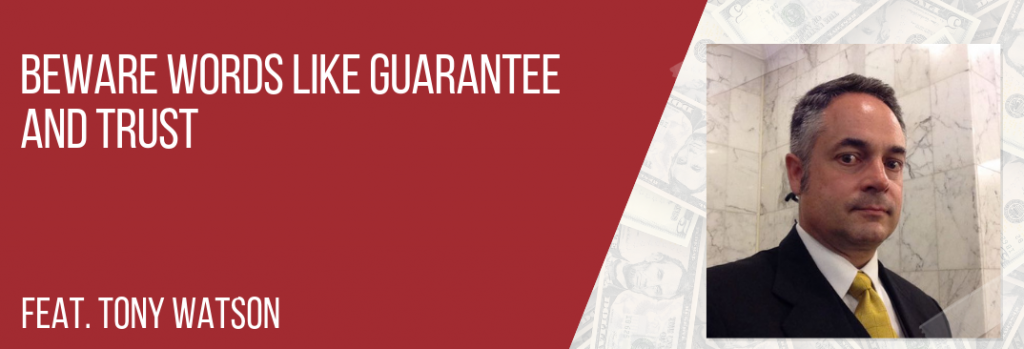Ep50: Tony Watson – Beware of Words Like Guarantee and Trust

Listen on
Apple | Overcast | Stitcher | Spotify | Other
Guest profile
Tony Watson is an investment professional with more than 20 years of experience in Asia ex-Japan credit markets. He joined Far East Investment Limited in 2016 where he is currently a Portfolio Manager and Responsible Officer. He was regularly ranked by Asiamoney, FinanceAsia and The Asset as one of Asia ex-Japan’s top 10 publishing credit analysts between 2001 and 2007. Tony joined the Hong Kong Society of Financial Analysts in 1996 and became Vice President in 2017 and President in 2018. He was HKSFA’s Acting Managing Director from March to September 2015. He was named CFA Institute’s 2015 Volunteer of the Year and awarded its 25-year Continuing Education Milestone in 2017. He became a CFA charter holder in 2000. He graduated with an MBA degree from Western Business School at the University of Western Ontario with an MBA in 1995 and BBA from St. Francis Xavier University in 1988.
In this episode, Tony shared his story investing in a medium sized trust company that was priced at $10 per share and how it devastatingly dropped down to zero. Learn why it is important to know the risk involved in trust investments, why it is important to understand what happens to trust companies in times of credit stress.
“If the markets are telling you something, listen, don’t find good reasons to continue in your path.”
Tony Watson
Topics Covered:
01:39 – Andrew gives a summary of Tony’s educational and professional experience
03:24 – Tony narrates how his investment in a trust company ended up a big loss
06:58 – Sharing how this experience essentially helped him in his career as a credit analyst
09:14 – Andrew tells what he learned with banks and financing specifically in Asia
13:00 – Tony gives one actionable advice to avoid the same situation he did
13:26 – Andrew summarizes the six important and common mistakes in his podcasts
14:23 – Parting words from Tony: “Listen to what the market’s telling you.”
Main Takeaways:
Lesson 1: “A trust company is not a bank. A small trust company is not too big to fail.”– Tony Watson
Lesson 2: “My big takeaway there is only the biggest banks are too big to fail, and only banks get bailed out.”– Tony Watson
Lesson 3: “(The mistakes I did) Number one, do your research. Number two, things go the wrong way and continue to go the wrong way. Don’t look for reasons why they can turn around and realize that you own all the loss on this and you’ve got to decide to stop loss and get out at some point. Other than that, ask questions from people who know. I relied on folksy mom and pop research just asking friends and family. I should have sat down with a bank analyst or done a little reading and just better understood what happened to trust companies in times of credit stress.” – Tony Watson
Lesson 4: “Thousand credit officers in the bank are likely to do a better job at allocating that capital towards the most attractive opportunities than maybe an equity investor that’s trying to find a thousand different companies to invest in.”– Andrew Stotz
Lesson 5: “Six common mistakes that are made: First is a failure to do research. Second is a failure to properly assess the risk. The third is to be driven by emotion or flawed thinking a little bit about that cognitive bias. Fourth is misplaced trust. I note down that this company had two interesting words in its name, guarantee, and trust. And number five is failed to monitor their investment. Number six in a category, all by itself, is invested in a startup company, which this was not that case.”– Andrew Stotz
Connect with Tony Watson:
Andrew’s books
- How to Start Building Your Wealth Investing in the Stock Market
- My Worst Investment Ever
- 9 Valuation Mistakes and How to Avoid Them
- Transform Your Business with Dr.Deming’s 14 Points
Andrew’s online programs
- Valuation Master Class
- Women Building Wealth
- The Build Your Wealth Membership Group
- Become a Great Presenter and Increase Your Influence
- Transform Your Business with Dr. Deming’s 14 Points

